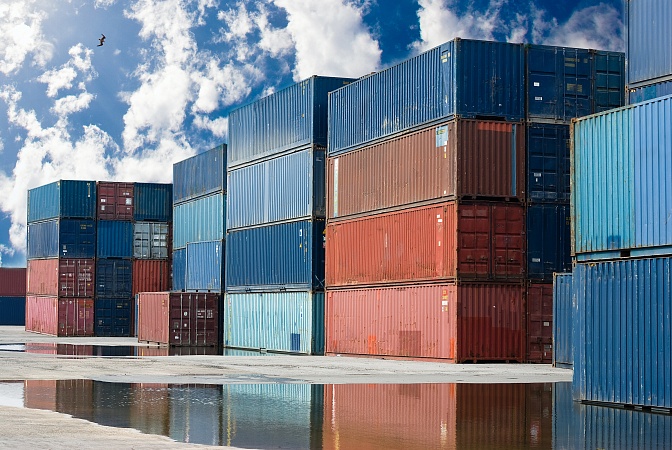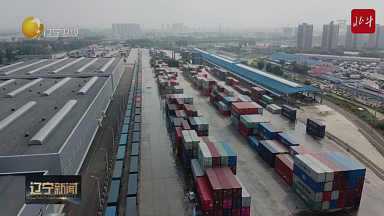The continuing blockage of the main channel of the Suez Canal threatens to bring further chaos to an already disrupted ocean freight market, creating a fresh surge of vessels when those currently stuck are released and adding to shortages of containers in export markets, freight forwarders have warned.
As of midday GMT today, the Evergreen ultra-large container vessel ‘Ever Given’ remains lodged sideways in the main channel of the Suez Canal, blocking vessels in both directions and «creating one of the worst shipping jams seen in years — and threatening even more chaos when the grounded vessel arrives in Europe, together with the vessels behind», observed Grant Liddell, business development director of UK freight forwarder Metro Shipping.
Currently there are hundreds of ships — including dozens of container vessels — waiting to enter the Suez Canal, after the 400-metre 20,000 TEU ‘Ever Given’ ran aground diagonally across the single-lane stretch of the southern section of the canal on Tuesday morning.
Deeper consequences
«Pretty much all vessels from Asia destined to the Mediterranean and Europe sail through the Suez Canal, with an average capacity of 380,000 TEU per week on this one lane, which is equivalent to 55,000 TEU of cargo arriving in Europe daily,» Liddell noted. «This means there is (potentially) a 110,000 TEU spike, and growing, of delayed vessels into Europe, and the consequences will be much deeper than the closing of the Suez Canal currently.»
He added: «In addition to the inbound stress on European ports, the spike simultaneously delays the movement of 55,000 TEU of export loaded and empty containers back to Asia every day, which is going to impact the numbers of empty containers available in Asia, which is already suffering its own trauma.»
Keith Gaskin, Group Commercial Director at SEKO Logistics, also pointed to concerns about the impact on empties alongside the other issues relating to the delays of the vessels, highlighting «... the effect this will have on the already depleted equipment around the globe and especially in Asia. We’ve seen how ships being laid up outside Long Beach, as well as laden containers of PPE around the globe being sat awaiting delivery to the final DC, has affected global container inventory levels. With so many ships backed up in the Suez or delayed to avoid the Suez issue, this will further deplete the availability of available containers at origin.»
Six-day delay
Liddell highlighted that there have not been many cases of ultra-large vessels running aground, but when the 19,000 TEU CSCL Indian Ocean ran aground in the Elbe river in 2016, it took six days to get the vessel re-floated.
«Shipping lines will be considering how long they wait before they begin diverting vessels around Africa on Asia-North Europe and Asia-USEC services, adding a week to transit and using a lot more fuel,» Liddell observed. «The longer the canal is closed, the larger the queue of vessels will be lined up to transit it, which means that additional waiting times must be anticipated even when the canal does open up again.»
He noted that because of restrictions and limits in the number of vessels that can access the canal per day, «it may be that a 24-hour impact actually takes significantly longer to repair and unwind».
Vessels begin to divert
As reported today in Lloyd’s Loading List, some vessels have already begun to divert around the Cape of Good Hope, taking the far longer route around the Cape of Good Hope to get to Europe or the east coast of North America — with Evergreen’s Ever Greet, a sistership to the Ever Given vessel that ran aground in the canal on Tuesday, apparently the first containership to do this, according to Lloyd’s List Intelligence AIS tracking. The diversion was noted around 10.30 GMT yesterday, just hours after attempts to refloat Ever Given at the Suez Canal failed.
Other container lines yesterday indicated that they had not yet decided whether to divert or not. Maersk, which has nine of its own vessels affected by the closure of the canal, along with two of its 2M alliance partner Mediterranean Shipping Co, said estimated times of arrival would be «jeopardised» as salvage efforts continued, adding that the line would «do our upmost to mitigate the delay as best as we can», Lloyd’s List reported.
Vessels reversed
Liddell noted that as of yesterday, two of the three vessels stuck immediately behind the Ever Given — Asia Ruby and YM Fountain — had begun the process of being reversed back out of the southern end of canal, assisted by a number of tugboats.
He said the impact could be significant on the industry if the situation continues, with the company’s local partners advising that the canal will take into next week to recover even if the Ever Given was refloated today.
«Not only are there hundreds of additional vessels that are now unable to continue their transit, but the impact on UK and European ports will be felt in the coming weeks, as vessels are even further off schedule — and once released, there will be a rush to the berths to discharge import containers and re-load export laden and empty boxes back to Asia,» Liddell noted, highlighting concerns that the container handling infrastructure in Europe could «buckle» as a consequence.
«Let’s hope that the experts and engineers can resolve the issue as soon as possible and the resulting issues are limited, although we suspect that this will have an impact for weeks to come,» he added.
While some remain hopeful that the Ever Given can be refloated in a matter of days, one company involved in the attempt said they could not rule out that it could take weeks.
Blocked capacity rising fast
Logistics visibility platform Project44 highlighted that in just 24 hours there had been a more than 40% increase in the level of vessel capacity stacking up behind the Ever Given. As of 09.30 GMT yesterday, Project44’s tracking showed 47 container vessels representing 540,716 TEUs vessel capacity impacted, a 42.5% increase over the 379,200 TEUs reported the previous day, it noted.
«Moreover, the chances of a quick solution seem to have disappeared,» it added. «Many waiting ships are mega-vessels navigating the Asia-Europe route, making multiple stops in European ports. With even more cargo waiting at Chinese ports for vessels to transport it to those European markets, the delays are equally problematic in the Europe-Asia direction. Given the number of vessels that are affected, carriers’ networks could be disrupted for weeks and months.»
The company said the incident highlighted that «more than ever, visibility into floating inventory is critical. The ability to divert cargo, manage expectations, and make adjustments in real-time is imperative for shippers.»
Jett McCandless, CEO of Project44, commented: «Once the log-jam is broken, major ports in Rotterdam, Antwerp, and Hamburg will be swamped. That congestion will have rolling effects further down the supply chain for months to come, exacerbating an already problematic situation at major European ports.»




